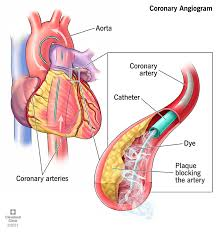A client diagnosed with schizophrenia functions well during hospitalization but decompensates after discharge. What does the therapeutic milieu provide that may be missing in the home environment?
Mandated activities.
Visitor restrictions.
Structured programming.
Peer pressure.
The Correct Answer is C
Choice A reason:
Mandated activities are part of a therapeutic milieu, but they are not the primary element that contributes to the stability of a client with schizophrenia. While these activities provide a routine, they do not encompass the comprehensive support system that structured programming offers.
Choice B reason:
Visitor restrictions can be a component of a therapeutic milieu, particularly in inpatient settings, to ensure a safe and controlled environment. However, this is not typically what is missing in the home environment that leads to decompensation.
Choice C reason:
Structured programming is a key element of the therapeutic milieu that provides a stable and predictable environment, which is often lacking at home. This structure includes scheduled therapy sessions, social interactions, and activities that are designed to improve coping skills and social functioning. The consistency and predictability of structured programming can significantly benefit individuals with schizophrenia, helping them maintain functional stability.
Choice D reason:
Peer pressure is not a therapeutic aspect of the milieu. In fact, peer pressure can sometimes be negative. However, positive peer interactions and support are important in a therapeutic setting, as they can provide encouragement and a sense of community.
Nursing Test Bank
Naxlex Comprehensive Predictor Exams
Related Questions
Correct Answer is A
Explanation
Choice a reason:
A history of allergy to iodine is a critical finding to report before a coronary angiography because the contrast dye used in the procedure typically contains iodine. Patients with an iodine allergy may experience severe reactions, including anaphylaxis, which can be life-threatening. Precautions such as premedication with steroids and antihistamines or the use of alternative contrast agents may be necessary.
Choice b reason:
A serum potassium level of 4.0 mEq/L is within the normal range, which is approximately 3.5 to 5.2 mEq/L for adults. Therefore, this finding is not significant and does not need to be reported to the healthcare provider prior to the procedure.
Choice c reason:
A blood pressure reading of 138/90 mmHg is slightly elevated but does not reach the threshold for stage 1 hypertension, which starts at 140/90 mmHg for individuals under 60 years of age. While it should be monitored, it is not an urgent concern that needs to be reported immediately before a coronary angiography unless the patient shows symptoms of hypertensive crisis.
Choice d reason:
An EKG showing atrial fibrillation is an important finding; however, it is not typically a contraindication for coronary angiography unless the patient is hemodynamically unstable or symptomatic. Atrial fibrillation can increase the risk of stroke, but anticoagulation management is usually the focus rather than postponing necessary diagnostic procedures.

Correct Answer is C
Explanation
Choice A Reason
Limit setting may be helpful for a client who displays hypervigilance and refuses to attend unit activities, as it can provide clear expectations and help reduce anxiety. However, this behavior does not pose an immediate risk to the safety of others, making limit setting less essential compared to behaviors that could lead to harm.
Choice B Reason
While being flirtatious toward staff members may be inappropriate and require intervention, it is typically addressed through professional boundaries rather than limit setting. Limit setting in this context would involve clarifying acceptable behaviors within the therapeutic relationship.
Choice C Reason
Urging another client to commit violence is a behavior that necessitates immediate limit setting. This behavior poses a direct threat to the safety of others and disrupts the therapeutic environment. Limit setting here would involve immediate intervention to prevent harm and to maintain a safe environment for all clients.
Choice D Reason
A client who clings to the nurse and seeks advice on inconsequential matters may benefit from limit setting to encourage independence and appropriate use of staff time. However, this behavior is not as disruptive or dangerous as inciting violence, making it a lower priority for limit setting.
Whether you are a student looking to ace your exams or a practicing nurse seeking to enhance your expertise , our nursing education contents will empower you with the confidence and competence to make a difference in the lives of patients and become a respected leader in the healthcare field.
Visit Naxlex, invest in your future and unlock endless possibilities with our unparalleled nursing education contents today
Report Wrong Answer on the Current Question
Do you disagree with the answer? If yes, what is your expected answer? Explain.
Kindly be descriptive with the issue you are facing.
